World Cup Drama in Khanty-Mansiysk – Just What the Doctor Ordered
Round 2 Report from the 2019 World Cup

The foyer of the 2019 World Cup venue, the Ugra Chess Academy just outside the centre of the city in Khanty-Mansiysk, is its own little world.
The front door is guarded by bored officers in army fatigues, in two corners of the foyer you can watch the Russian and English language commentators perform behind glass, there is an interview screen covered in sponsors’ names in front of which players explain their games for the cameras, and there are couches on which to relax.
However, the centre of attention is always a bank of 12 television screens showing the top games. There you can find seconds, parents, media and players not otherwise engaged intently watching and discussing the games. A few players will be called into the commentary rooms: Peter Svidler is always in demand but Liviu-Dieter Nisipeanu (after his upset win over Hikaru Nakamura) and Evgeny Tomashevsky (after his defeat of Indian giant-killer Aravindh Chithambaran) have also been willing speakers.
Turnover is high in front of the screens. Players, after finishing their game, need wait no longer than half an hour before a minibus will return them to their hotel, so they offer a few opinions about their own game and those being broadcast, and leave with their second/parent/friend in tow. However when Anish Giri and Evgeniy Najer reached an Armageddon game in the concluding match of the second round which started at 9pm, around 15 people forwent dinner and gathered in the foyer to watch Giri win the decisive final game.
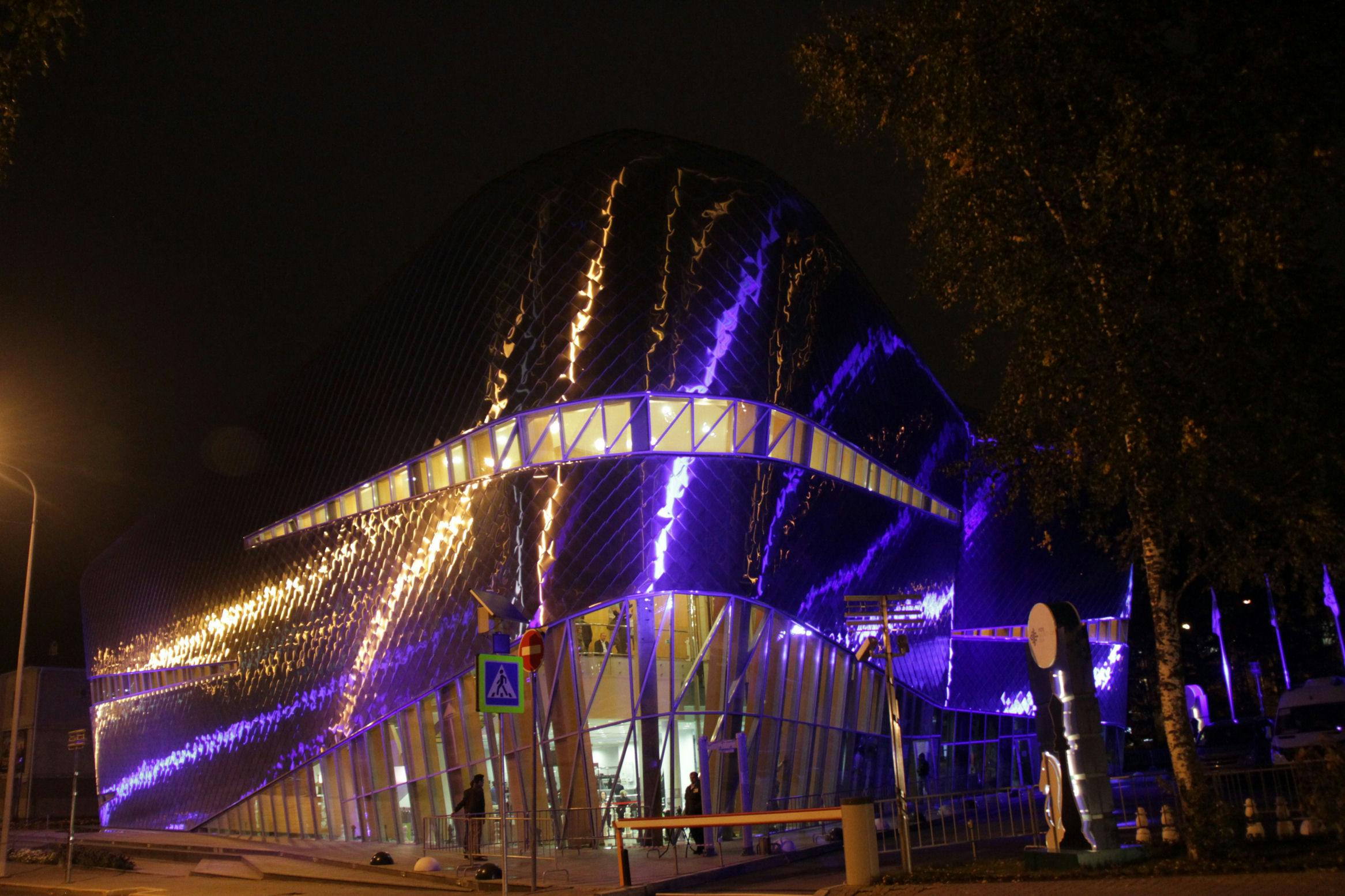
The view from outside the venue. Photo: Cathy Rogers
The relaxed atmosphere at the venue is a relief given the palpable annoyance among the players during the pre-tournament technical meeting hosted by chief arbiter Ashot Vardapetian immediately after the opening ceremony.
Vardapetian announced some unpopular new rules for the World Cup, including that, although players would be forfeited for arriving even a second late, they could buy their way out of trouble by paying $500 to FIDE. After more than 15 minutes there was no way back, even upon payment of more money.
Daniil Dubov asks about what would happen if a mini-bus was late – will all the players on the bus be charged $500 to play? “Do you think FIDE needs the money that much?” said Vardapetian – and a resounding, laughing, “Yes!” goes up around the auditorium. “The buses will not be late,” was Vardapetian’s final answer.
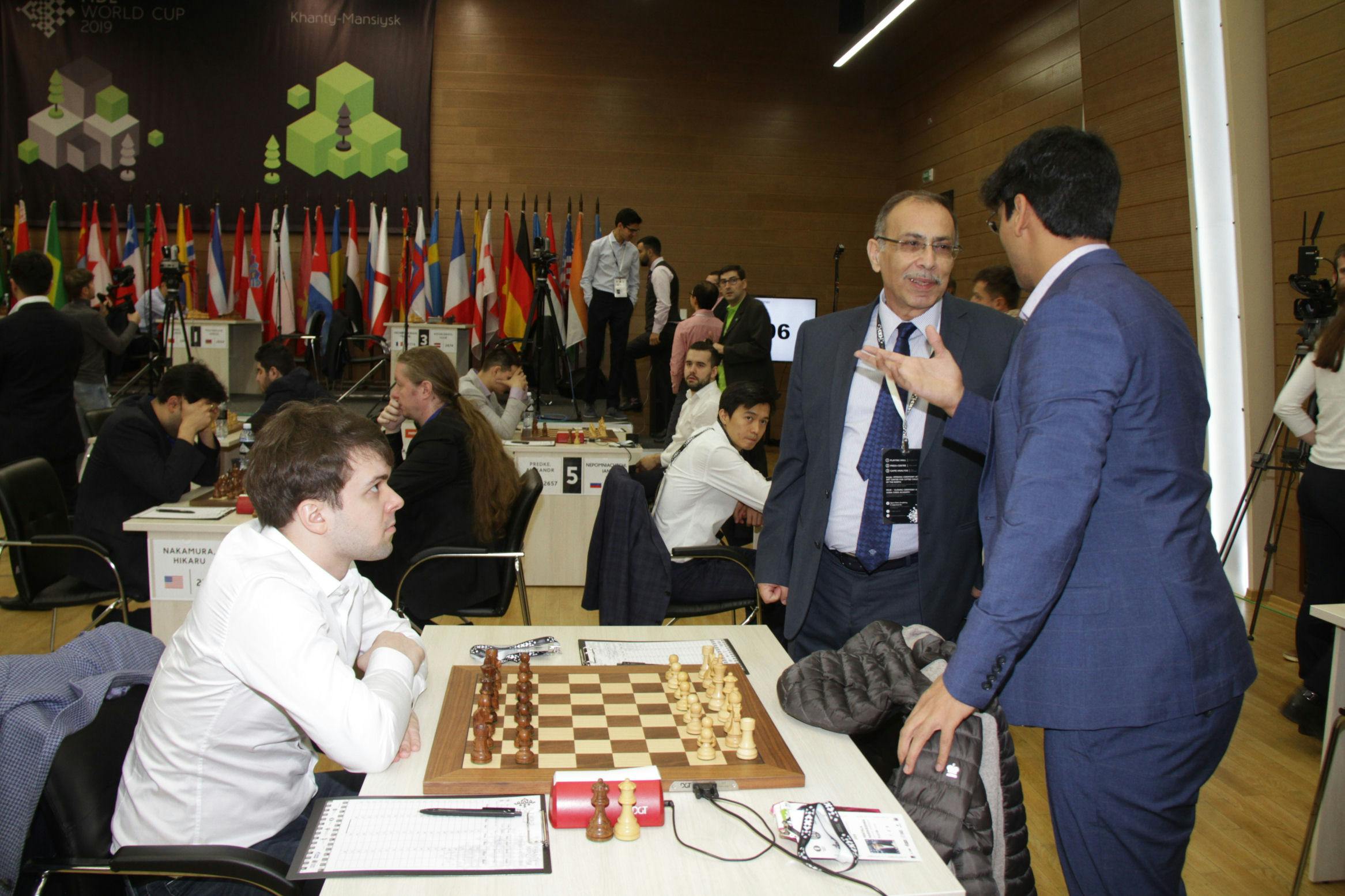
GMs Harikrishna speaks with Chief Arbiter Vardapetian before his game against GM Fedoseev. Photo: Cathy Rogers
Vardapetian also had the unfortunate duty of introducing the dress code - “Remember what happened in Tbilisi!” he warned. For those not aware of the controversy at the previous World Cup in Tbilisi, the Canadian Grandmaster Anton Kovalyov was thrown out of the playing hall at the start of the third round by FIDE official Zurab Azmaiparashvili for breaching a non-existent dress code by wearing the half length shorts he had worn to every previous game. To retrospectively justify Azmaiparashvili’s actions, a formal dress code was introduced by FIDE. Players at the technical meeting complained that the dress code was not mentioned in their World Cup contract, but it is indeed on the statute book now.
And so Vardapetian announced: no t-shirts, no jeans, no sneakers and no “basketball caps”. (The last one was a bit of a surprise; maybe Michael Jordan missed a trick by not promoting a line of hats.) Failing the dress code would mean that you would not be allowed to enter the playing hall.
After the meeting, players approached Vardapetian with questions about whether their clothes were acceptable: Vladimir Fedoseev’s stylish dark denim trousers – no, Parham Maghsoodloo’s padded vest – probably no. “It’s not my decision – these are FIDE rules,” was Vardapetian’s answer to every query.
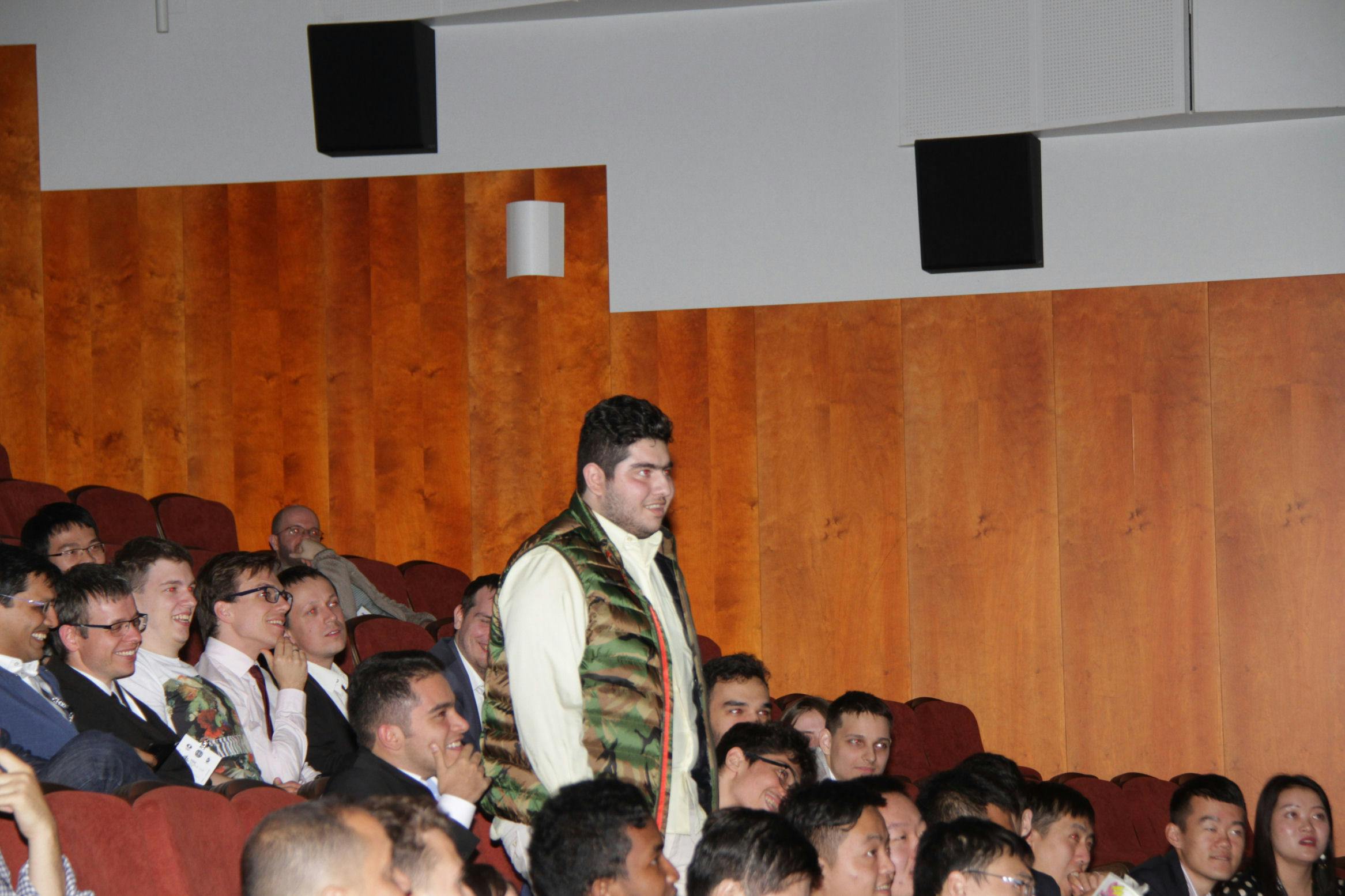
GM Maghsoodloo in the aforementioned vest. Photo: Cathy Rogers
Curiously, when Fedoseev played Harikrishna it was the Indian GM who incurred the interest of Vardapetian, being told that the jacket he had on the back of his chair would have to be handed to the arbiter and only returned at the end of the game - or, according to Vardapetian, if Pentala Harikrishna became cold.
Harikrishna certainly ran hot at the board.
https://lichess.org/study/g8zq6wus/fySsEnyz
Harikrishna was one of only two Indians to survive the second round, India having started the tournament with 10 representatives. Indeed the last 32 are comprised of 12 Russians, 5 Chinese, 3 US players and 3 Azeris, plus 7 countries with a single player remaining.
Yet, according to seedings, the only country seriously underrepresented is the US, who had five players seeded in the top 32 at the start of the tournament. The biggest shock of the second round was the defeat of 14th seed Hikaru Nakamura at the hands of Germany’s Liviu-Dieter Nisipeanu.
https://lichess.org/study/g8zq6wus/51fSJq1Q
Russia’s remaining 12 are two players more than might be expected by seeding, most notably Daniil Yuffa after winning a crazy match against England’s Luke McShane. Yuffa was on the verge of victory time and again, only for McShane to fight back. First McShane avoided elimination in the classical games by drawing a (technically lost) knight versus two bishops. Yuffa won the first rapid tiebreakers but McShane bounced back to level. Yuffa won the first 10 minute tiebreaker but McShane fought back again. Yuffa won the first blitz game and seemed to have the game under control in the second but then…
https://lichess.org/study/g8zq6wus/Iuf8ueHL
The tragedy of the second round must be the fate of Nihal Sarin, who was close to a 2-0 victory in the classical games before an incredible blunder ruined everything…
https://lichess.org/study/g8zq6wus/DBrNgU3d
https://lichess.org/study/g8zq6wus/LArxgwg9
When the tiebreakers came around the next day, Nihal was a broken man (boy?) and Safarli controlled the rapid games without difficulties and progressed to meet his Azeri compatriot Shakhriyar Mamedyarov.
There were plenty of other second round games to keep the foyer spectators in Khanty-Mansiysk entertained – teenage Iranian star Alireza Firouja’s fine endgame win over Daniil Dubov, surprise packet of the tournament Xu Xiangyu’s fine rook sacrifice to set up an upset match victory over Ernesto Inarkiev, plus the already famous five knight endgame between Le Quang Liem and Anton Korobov .

GM Firouzja and GM Dubov. Photo: Cathy Rogers.
However the final example in this report is more typical of the World Cup – a game where the player exploiting a small advantage is tricked by a more tactically alert opponent. The game was the second tiebreaker between Russia’s Dmitry Jakovenko and England’s Gawain Jones. Jakavenko had won the first rapid tiebreaker and so needed only a draw to win the match.
https://lichess.org/study/g8zq6wus/extpovy4
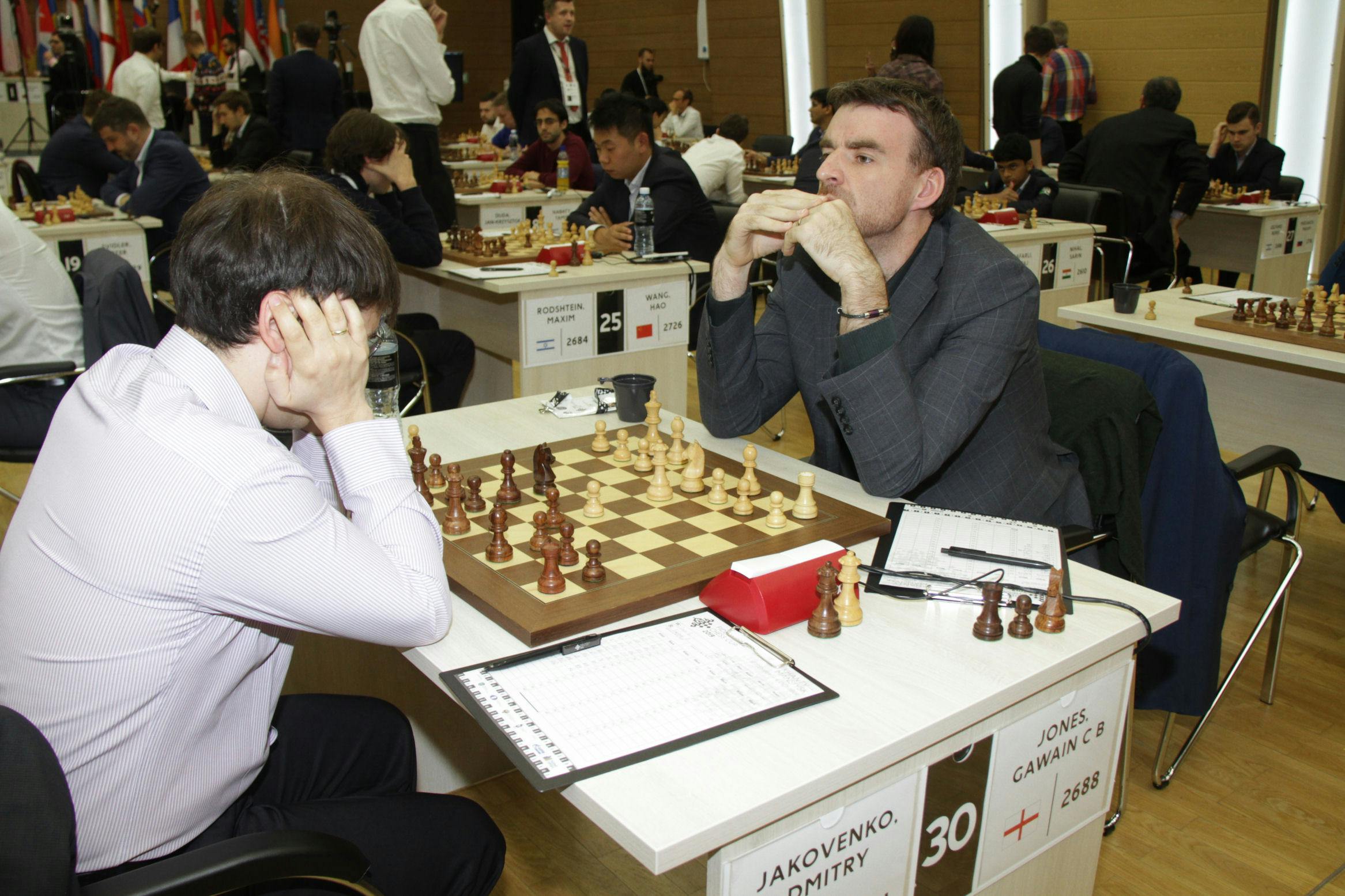
GM Jakovenko vs. GM Jones. Photo: Cathy Rogers
Postscript:
Sitting on the foyer couch for an interview about the World Cup with the Russian newspaper Argumenty I Fakty during the first game of the second round, the early questions were easy.
Yes, the organisation in Khanty-Mansiysk was fine, no player was a clear favourite, and to win the tournament will require, more than anything, luck. Yes, the Chinese and the Russians looked good at the moment but past World Cups have shown that a single round can see almost an entire country’s contingent heading home.
Then came the fateful question: “What have you seen of Khanty-Mansiysk?”
I paused, leading to a prompt: “Some of our museums, perhaps?”
It was time for the truth: “I did book a driver for two and a half hours to take my wife Cathy and I on a tour of the city yesterday, but we didn’t see any museums. The first 15 minutes were good, visiting the archaeological park and in the last 15 we were taken to the beautiful Sobor Cathedral. In between we saw the airport, a hotel and a medical centre, twice.”
There was a bemused look on the interviewer’s face.
“The driver thought the airport was a good idea because there was a statue of a Khanty family at the front. The back of the hotel had a view of some marshlands and two fish factories. In between the driver dropped in to the medical centre for a check-up. The first time they couldn’t take him but half an hour later, when we were departing the airport, he had a call and returned for his appointment. We sat in the car for 20 minutes with a distant view of the venue for the 2020 Chess Olympiad. On his return we learned that his cholesterol was a little high but his blood sugar levels were good and, of course, he had had his influenza injection in preparation for the long Siberian winter. “So unfortunately, no, I haven’t seen much of Khanty-Mansiysk.”
“Well, perhaps when you come back for the Olympiad you will,” said the interviewer sympathetically, as she bid her goodbyes.
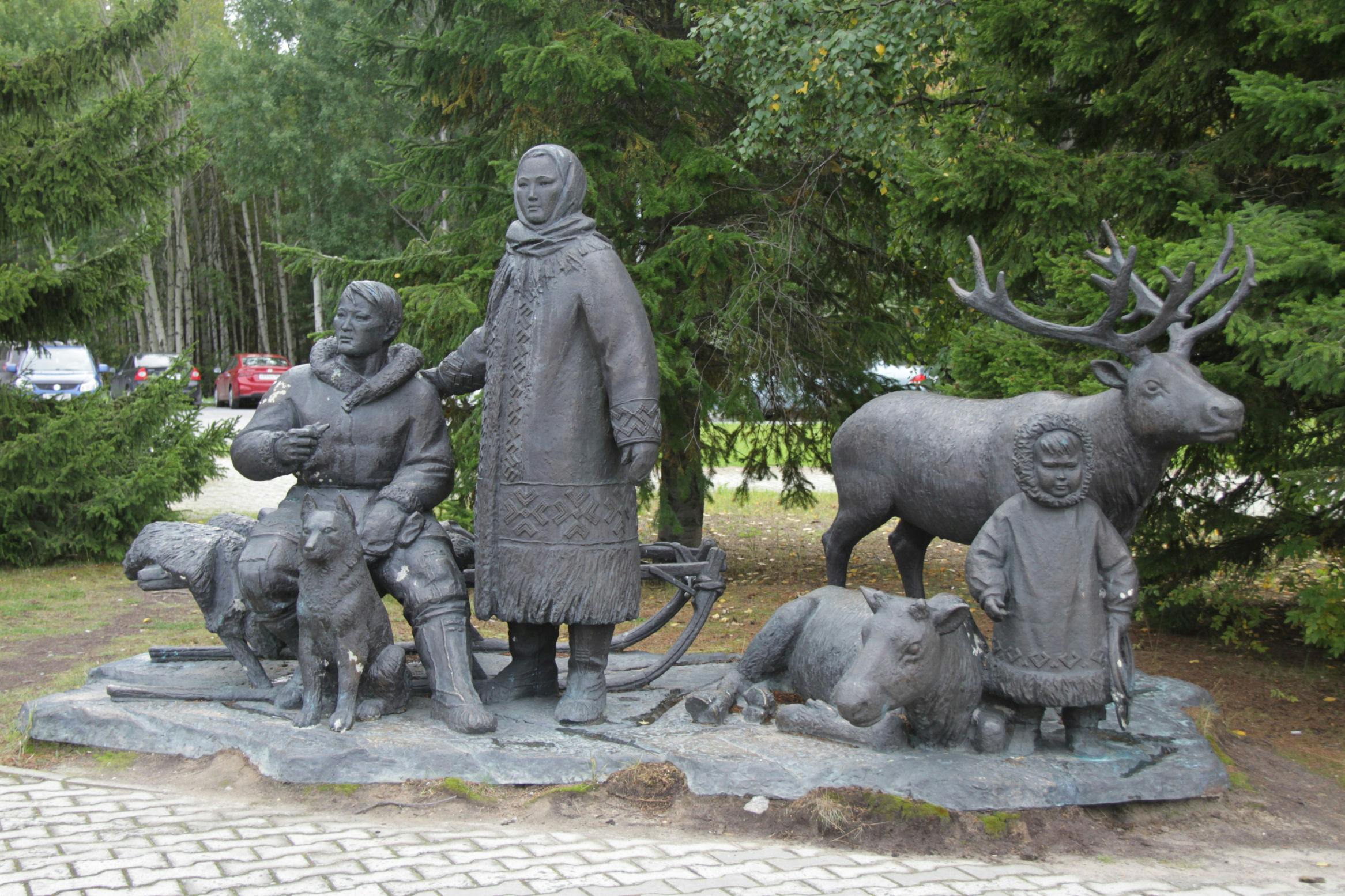
A sculpture outside the Khanty-Mansiysk Airport. Photo: Cathy Rogers
The World Cup games in Khanty-Mansiysk begin at 12.00pm Central European Summer Time and 6am US EST. Watch them live on Lichess here. Ian Rogers has now left Khanty-Mansiysk. His first report from the World Cup may be found here.
Stay tuned to our standard communication channels for more: